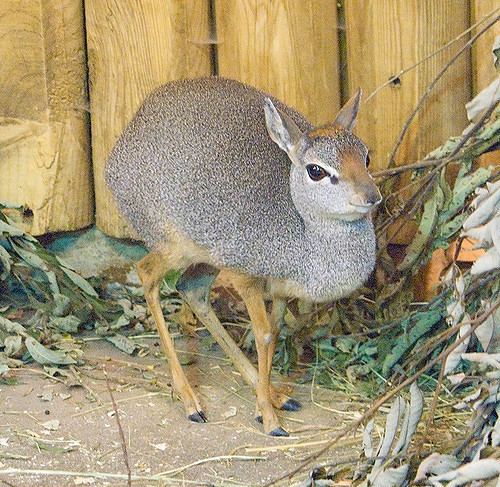Order Artiodactyla Genus Madoqua Higher classification Dik-dik | Phylum Chordata Scientific name Madoqua saltiana Rank Species | |
Similar Silver dik‑dik, Günther's dik‑dik, Dik‑dik, Soemmerring's gazelle, Harvey's duiker | ||
Salt s dik dik tiny antelope
Salt's dik-dik (Madoqua saltiana) is a small antelope found in semidesert, bushland and thickets in the Horn of Africa, but marginally also in northern Kenya and eastern Sudan. It is named after Henry Salt who discovered it in Abyssinia in the early 19th century.
Contents

Salt s dik dik
Description

Salt's dik-dik are 52–67 cm (20–26 in) long, 33–41 cm (13–16 in) high and weigh 2.5–4.0 kg (5.5–8.8 lb). As in other dik-diks, the small, pointed horns are only present in the male. The colour varies significantly depending on the subspecies.
Taxonomy
Together with the closely related silver dik-dik, this species forms the subgenus Madoqua in the genus Madoqua (other dik-diks are also in the genus Madoqua, but the subsgenus Rhynchotragus). The taxonomy of this subgenus is complex and a matter of dispute. Today, the most widely used treatment is based on a review in 1978, but a significantly different treatment was presented in a review in 1972. Following the review in 1978, the silver dik-dik is treated as a separate monotypic species, and the Salt's dik-dik has five subspecies:
In 2003, each of the above was proposed to represent an evolutionary species, but at present, most maintain them as subspecies. The review in 1972 differed significantly from the above. Under that treatment, three species are recognized in the subgenus Madoqua: Salt's sik-dik (M. saltiana with the subspecies saltiana and cordeauxi), Phillip's dik-dik (M. phillipsi with the subspecies phillipsi, gubanensis, hararensis and lawrencei) and Swayne's dik-dik (M. swaynei with the subspecies swaynei, erlangeri and piancentinii). Of these taxa, cordeauxi, gubanensis and erlangeri were considered entirely invalid in 1978.
Behavior
Salt's dik-dik are shy animals. They are active at night and dusk to avoid the midday heat, and are considered crepuscular. Dominant dik-dik flare their crests. The animals are most often found in pairs and small groups, and Salt's dik-dik mainly eat leaves and shoots of acacia trees. Not much is known about the species' reproduction behavior.
